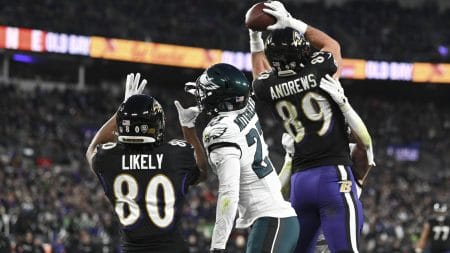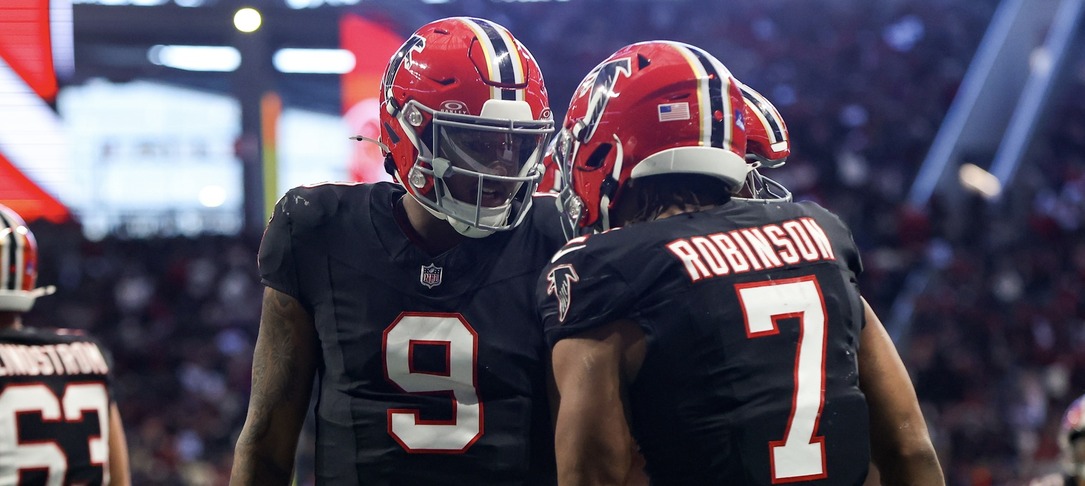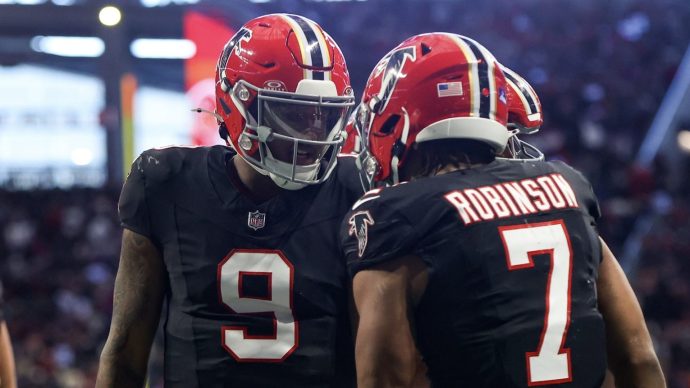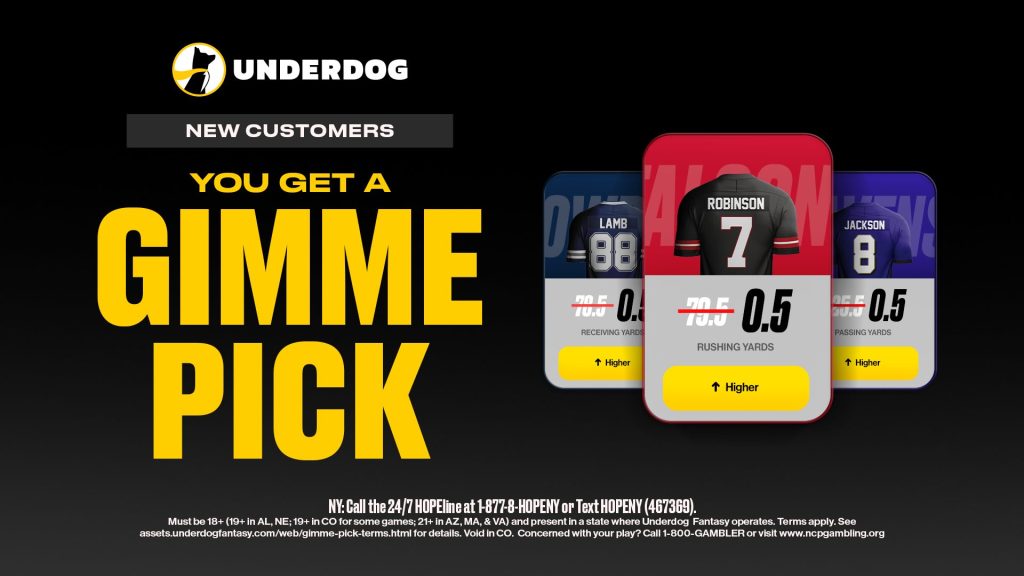This recurring article series will guide you through the best UFC props for each major upcoming slate.
In addition to free weekly picks and in-depth analysis, you’ll find additional strategy tips and other helpful hints below that could make you a more profitable UFC bettor. Make sure to check back here with us every week!
Best Offers in All States
UFC Fight Night: Tsarukyan/Hooker Props
Looking for the best UFC props? The Props crew compiles their favorite UFC prop picks for the upcoming event.
Let’s outline the best UFC props for Saturday!
Arman Tsarukyan vs. Dan Hooker
Arman Tsarukyan (22-3) will headline Saturday’s UFC Fight Night card in a pivotal lightweight clash against Dan Hooker (24-12), as he looks to cement his case for a UFC title shot.
Although Tsarukyan had been eyeing a showdown with Ilia Topuria for the 155-pound championship, his current path to gold now runs through Hooker. He was firmly in the mix alongside Justin Gaethje and Paddy Pimblett in the recent three-man race for the next title opportunity.
Riding a strong run of form, Tsarukyan has won seven of his last eight fights, including four straight. That stretch features notable victories over Charles Oliveira by split decision at UFC 300 on April 13, 2024, as well as finishes of Joaquim Silva and Beneil Dariush.
Hooker enters the main event with momentum of his own. The seasoned veteran has put together a three-fight winning streak, capped by a hard-fought split decision triumph over Mateusz Gamrot at UFC 305 on August 17, 2024. With both men surging, the matchup could serve as a final proving ground in the race for a title shot in the crowded lightweight division.
Fighter Analysis
Tsarukyan has built his reputation as a pressure-heavy, high-output grappler who blends elite chain wrestling with rapid positional transitions. His recent wins over elite names have showcased his improved cardio, striking defense, and comfort in close-range exchanges. He doesn’t rely on power shots but breaks opponents down with pace, angles, and top control.
His victory over former champion like Oliveira by split decision and recent finishes prove his ability to adapt and capitalize on stylistic openings, particularly against opponents with less defensive wrestling acumen. In a five-round main event setting, his conditioning and offensive variety allow him to push a suffocating pace from start to finish.
Hooker thrives in the chaos of striking exchanges, using range, timing, and durability to frustrate opponents. The win over a proven grinder like Gamrot highlights his ability to neutralize offensive wrestlers with strong defensive framing and intelligent counter striking. Hooker’s recent three-fight win streak reflects a mental and technical reset in his career.
He’s learned to control tempo better, avoid overextending in striking trades, and remain poised during late-round rallies. If he can keep the fight standing for extended stretches, his range and variety of strikes, especially knees and front kicks, could create problems for a pressuring fighter.
Tsarukyan’s key vulnerability remains his striking defense in the pocket. Though his improvements are clear, he can still be hit cleanly when entering takedown range without proper setups. Against taller, rangier opponents with strong clinch games, he sometimes hesitates on entries, allowing fights to remain competitive longer than needed.
When opponents deny early takedowns, Tsarukyan has shown occasional lapses in urgency, allowing momentum to shift mid-fight.
Hooker’s main concern is takedown defense and damage absorption. While he’s shown resilience, repeated takedowns and control can sap his output and take away his primary weapons. His tendency to back up in straight lines makes him susceptible to level changes and clinch entries.
Over the course of five rounds, his defensive wrestling can wear down, especially against an opponent with the pace and technique of Tsarukyan. If he can’t establish range early, he risks spending too much time on his back.
Given their styles and recent form, this fight is likely to be dictated by who controls the grappling exchanges. Tsarukyan’s pace, takedown efficiency, and ability to maintain top control over multiple rounds should allow him to neutralize Hooker’s striking.
While Hooker will have moments on the feet, the volume and pressure of Tsarukyan tilt the balance over five rounds. Expect a competitive but one-sided decision, with the potential for late ground-and-pound dominance.
Pick: The fight will go the distance
Pick: Arman Tsarukyan by points
UFC Props – What to Consider When Picking Fighters
The UFC props and betting landscape have evolved far beyond simply picking a winner. With operators expanding their offerings, player picks have become a key part of the sharp player’s portfolio. Whether you’re targeting significant strikes, takedowns, or method of victory, mastering MMA props requires a strategic mindset and a stat-driven approach.
Here’s how to improve as an MMA prop bettor — from key data points to angles most casual fans overlook.
Know the Prop Menu
Player props in MMA typically revolve around individual fighter performance. Popular markets include:
- Significant strikes landed (O/U)
- Takedowns landed (O/U)
- Submission attempts
- Fight to end in a specific method (KO/TKO, SUB, DEC)
- Round-by-round performance props
- Fantasy points (on DFS sites)
Different books offer different lines, so line shopping is key — especially for niche markets like submission attempts or control time.
Understand Fighter Archetypes
A fighter’s style and tendencies often predict their statistical output:
- Volume Strikers: Think Max Holloway, Sean O’Malley — these fighters push pace and throw in bunches, making them great targets for significant strikes props.
- Wrestle-Heavy Grapplers: Fighters like Merab Dvalishvili or Curtis Blaydes shoot often and control from top position. These matchups are gold for takedown and control time props.
- Submission Specialists: Fighters like Charles Oliveira or Gerald Meerschaert may attempt multiple submissions even off their backs, which boosts props for sub attempts or submission win.
Matchups between contrasting styles often create exploitable angles — for example, a striker with poor takedown defense vs. a relentless wrestler.
Key Stats to Track
Not all stats are created equal. When researching props, the following metrics matter most:
- Significant Strikes Landed per Minute (SLpM) vs. Absorbed per Minute (SApM)
- Takedown Average (TD Avg.) and Takedown Accuracy/Defense
- Submission Attempt Rate
- Control Time vs. Control Time Allowed
- Pace Indicators: Fighter activity in past three fights, especially in three-round fights
- Fight Time Average: Correlates to volume props
Use sites like UFC Stats and Tape Index to break down tendencies and efficiency.
Dig Into Fight Context
Props aren’t just about the fighter — the opponent and circumstances are just as important:
- Short Notice Replacements: Often gas out early or have poor game plans. That can lead to early finishes or skew volume drastically.
- High Altitude: Events in Denver or Mexico City favor cardio machines and can cripple gassed-out strikers or grapplers.
- Judges and Cage Size: Smaller cages (like at the Apex) increase finishes and grappling exchanges. Certain states (like Texas or New York) have judging trends that favor aggression or control.
Also consider game plan. A striker facing a KO artist may use more lateral movement and fewer exchanges, lowering volume output.
Watch the Tape — Don’t Just Rely on Numbers
Numbers lie without context. One fighter may average 80 significant strikes per fight — but if it came from ground-and-pound in a dominant position, and they’re now facing a BJJ ace, that prop may not hit.
Watch how fighters approach certain matchups. Do they chase takedowns relentlessly or abandon them after one stuffed shot? Do they jab to keep range or step into the pocket and throw 4-punch combos?
Visual tendencies often explain why a fighter hits or misses props in different matchups.
Pick Your Spots — Don’t Bet Every Prop
Prop markets are sharp. Don’t try to force a bet on every fight.
- Target exploitable mismatches, like grapplers vs. weak takedown defense.
- Bet unders on volume for fights expected to end early or feature clinch-heavy stalemates.
- Look for overs on high-paced matchups between cardio-heavy volume strikers.
Focus on fights where the data and the tape point in the same direction. Your edge comes from combining both.
Track Results and Adjust
The best prop bettors don’t just bet — they track. Keep a log of your prop bets, categorized by prop type (e.g., SS landed, takedowns, method of victory). Over time, patterns will emerge:
- Are you more successful with overs or unders?
- Are certain fighters reliable in specific markets?
- Are you overrating stylistic edges that don’t pan out?
Use your results to refine your process.
Final Thoughts
Player props in MMA offer serious value for bettors willing to dive deep. They reward film study, stylistic breakdowns, and stat analysis more than public narratives or name value. While the market is getting sharper, most bettors still overlook the nuanced stats that define fighter performance.
To stay ahead: track trends, watch tape, and keep evolving your process. The edge is there — it just takes more work to find.
More UFC Betting Tips and Strategy
MMA, particularly UFC, has exploded in popularity across online sportsbooks, with fans placing bets on everything from UFC Fight Night matchups to major pay-per-view events, as well as other promotions like Professional Fighters League (PFL) and ONE Championship.
How to Bet on UFC Fights
While the range of MMA betting markets isn’t quite as broad as other sports, especially for lower-profile fights, most UFC matchups feature three core wagering options:
Moneyline: Betting on the Winner
The most common MMA bet is the moneyline, where you pick which fighter will win. Sportsbooks calculate implied probabilities based on fighter form, matchups, and momentum to set the odds.
Example:
Jon Jones is the current champion on a six-fight win streak, including four knockouts.
Ciryl Gane is a seasoned vet but has lost three of his last five, two by knockout.
Implied probabilities:
- Jon Jones: 75–80% (set as the favorite)
- Ciryl Gane: 25–30% (set as the underdog)
Odds:
- Jon Jones: -300 (Bet $300 to win $100)
- Ciryl Gane: +300 (Bet $100 to win $300)
Some books also offer three-way moneylines, including the option to bet on a Draw, which is rare but comes with longer odds and bigger payouts.
Round Totals: Over/Under Bets
Round total bets let you wager on how long the fight will last — essentially, whether the fight ends before or after a set round mark.
Example:
Fight: Zhang Weili vs. Angela Hill (5-round title bout)
Round total set at 3.5 rounds (equivalent to 2:30 of Round 3)
Due to Zhang Weili’s knockout power and Angela Hill’s recent KO losses, the Under is favored:
- Over 3.5 rounds: -110 (Bet $110 to win $100)
- Under 3.5 rounds: -140 (Bet $140 to win $100)
Method of Victory Props
For higher payouts, you can bet not just on who wins, but how they win. Available options typically include:
- Win by KO/TKO/DQ
- Win by Submission
- Win by Decision
Because these bets require both the right winner and method, they’re harder to predict — but they pay more. A knockout artist’s KO odds will carry a lower payout than a submission, while a submission specialist may be favored to win that way or via decision.








